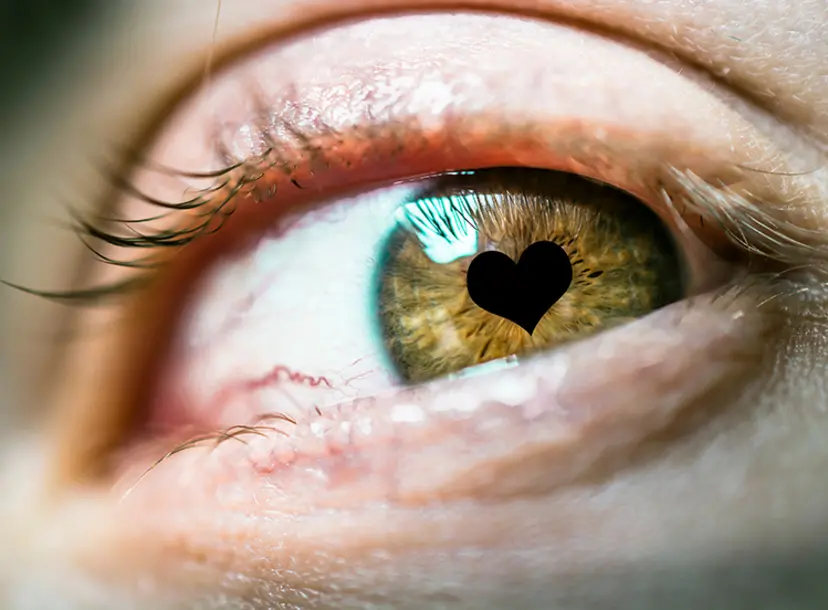You know the story. Two strangers locked eyes across a crowded room, and there it is: butterflies in the stomach, sparks in the air—they know they’ve found “the one”.
Love at first sight is a popular romantic theme, from novels to cinema, all the way to that sickly sweet couple at the dinner party. But is it real? We delved into the science to find out…
What is love?
Anthropologist Helen Fisher, who studied the brain activity of people madly in love with each other through MRI scans, says that romantic love takes a very ‘primitive’ path through the brain. The good feeling we experience when falling in love is driven by dopamine, the brain chemical behind our motivation to find food, water and everything else we need for survival.
And just like other survival mechanisms like fear, for example, it can be triggered instantly.

It’s real if you feel it
Regardless of scientific proof, people report experiencing love at first sight. A study from 2004 estimates that two out of three people in the USA have indeed been there. Perhaps surprisingly (given that women tend to be the prime consumers of rom-coms), slightly more men than women reported believing in love at first sight in a 2017 survey conducted by Harper’s Bazaar.
Chemistry in the couple
When you’re falling in love, physical and chemical changes happen in your body. You experience releases of large amounts of the neurotransmitters oxytocin and dopamine. While dopamine fires up the brain’s reward centres, resulting in a euphoric state, oxytocin helps you trust someone new in a way you might not normally, facilitating the formation of a deep bond. Oxytocin does the same thing in the few months following childbirth–bringing on the same overwhelming rush of love that parents feel for their child.
In those first few months of a relationship, your serotonin levels drop, causing cortisol (the stress hormone) to flood your body. This is why your heart beats faster, your pupils dilate, and maybe you start feeling ‘butterflies’ in your stomach. Lower serotonin levels might also be why you suddenly obsess over this new person, unable to think about anything other than them.
Falling in love is wonderful and scary and beautiful and euphoric and terrifying all at the same time, because your brain chemicals all go haywire.

Love is in the air
Your body odour may play a part in how attractive you are to someone. Some studies have shown that, during the ovulation phase of their cycle, women may be more attracted to the musk-like pheromones that men excrete.
The best-known research on this phenomenon is the 1995 “sweaty t-shirt study”, where women sniffed t-shirts that had been worn by men—no cologne, no deodorant, au naturel. The results showed that they preferred the odour of men with major histocompatibility complex (MHC) genes that are different from their own. This would produce offspring with a stronger immune system.
It isn’t only your potential future children that benefit from the biology of love. A 2019 study found that the act of falling in love boosted women’s innate immune systems, which helps protect them from viral and bacterial infections.
It’s all in the eyes
Possibly unsurprisingly, a lot of research into love at first sight has focused on how eye contact plays a role. Eye contact is unbelievably important for so many social interactions—people can often have entire conversations through minute facial expressions and intense eye contact.
One study tested 60 people who had never met before and found that prolonged eye contact between two people increased the romantic attraction they felt for each other. Blood pressures skyrocketed and the participants wanted to be paired with the same people again in the future – they wanted to know more about the other person. These effects were even stronger when people were allowed ‘mutual touch’ (despite the fancy wording – they mean holding hands).
However, this was only true for the participants who already classed themselves as romantic. If someone believes that they are generally unromantic, then mutual gaze had absolutely no effect. The best explanation for this – romantic people are more likely to interpret early physical attraction through the rose-tinted glasses of love.

So, is love at first sight really love?
In 2017, a group of researchers decided to once and for all figure out what love at first sight is.
First and foremost, they found that love at first sight didn’t exist without strong physical attraction—looks did matter. Also, probably unsurprisingly, people in long-term relationships scored higher on ‘love tests’ than people who had met for the first time but reported love at first sight. But it isn’t a trick of your memory once you’re in a relationship—people who had never met before truly believed that they had fallen in love with a stranger.
Overall, while love at first sight might not be as deep as committed, long-term, romantic love, it does exist. It doesn’t just signal physical attraction or high passion. Instead, love at first sight is a phenomenon that drives people to want to know more – it’s a readiness to fall in love and experience everything with this new person.
It’s a new spark with the stranger across the crowded room…
Fall in love with science
You can learn something new every week at the Ri, online via livestream or in person in the heart of Mayfair. Our public programme of science talks features the world's leading experts in physics, chemistry, biology and more.
About the author
Charlotte Collingwood is a neuroscience PhD student who uses computers, maths and a biology background to learn more about how the brain works. She is currently doing a three-month internship with us, sharing her love for all things science. She can be found on Twitter at @NeuroCharlotte
